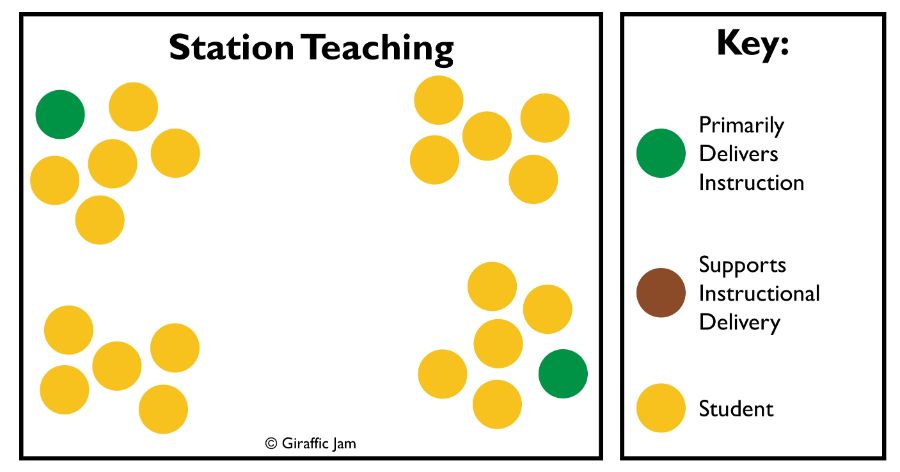
Did you know there are 6 co-teaching strategies that can be used in any classroom? If you caught my previous post, you know that co-teaching can be an easy way to benefit all learners when done correctly. Generally, when we talk about co-teaching, we are talking about a general education teacher and a special education classroom teacher working together to deliver instruction. But, I want you to think outside of the box and also use these strategies when you have any other adult in your room – whether it be an intern, a parent helper, or you and your grade-level team member combining classes for the day!
I think it’s important to note, that these strategies can (and should be) used interchangeably. I don’t ever use just one of these all day, every day. Mixing up strategies is such a critical step to increase engagement and student success.
Another note – each strategy has it’s own positives and challenges. Give them all a try and decide which ones work best for you and your learners!
In all of these models, the green and brown dots represent teachers while the yellow dots represent students. But, don’t fall into the trap of assuming the green dot is ALWAYS the general education teacher. The green dot can (and should be) any qualified adult. It’s important that the students see both adults as the ‘real’ teacher.
Notice, in several of these models there isn’t even a support co-teacher! Both dots are green, because both teachers are equally responsible for delivering instruction.

While one teacher provides the content of the lesson, the other teacher is observing student behavior and collecting data. This is a really great way for teachers to see exactly which student is mastering content. This is a great way to notice patterns and behaviors. It allows the observing teacher to truly focus on the students, not the content and what he/she is going to say next.

In this situation, one teacher is providing the lesson content while the other walks the room to help individual students. I find this is the co-teaching model my school uses most frequently.

Both teachers teach the exact same lesson, the exact same way, at the exact same time. Think of it as taking your class of 20 students and making it into two classes of 10. It’s important to realize, that in this model the lesson is exactly the same. If you are teaching two different lessons, you want to look into alternative teaching or station teaching.

A teacher takes a small group of the class and teaches them a modified version of the lesson, while the other teacher teaches the rest of the class. This is great for re-teaching or providing supports like manipulatives or special strategies.

The class is divided into three or more groups (some stations may be student led). Students rotate through each station and complete the tasks or lessons. Ideally, each station will have the same topic but have different ways of mastering it (for instance, solving word problems with number lines at one station and base ten cubes at another).

In this situation, each teacher gives the lesson to the entire class at the same time. Both teachers are at the front of the room delivering the instruction. As one teacher explains something, the other teacher can jump in and add his or her own comments or ideas to the lesson. This requires teachers to go back and forth to support each other in keeping the lesson moving.
What do you think? Do you already use any of these? Is there a new co-teaching strategy you want to try? Don’t forget to check out my previous post with co-teaching tips if you haven’t done so already!
3 Responses
Looks like there are missing strategies. Please let me know when they are up and running!
Hey Patricia! I’m working on the last couple of posts now, check back in a week or two and they will all be there 🙂